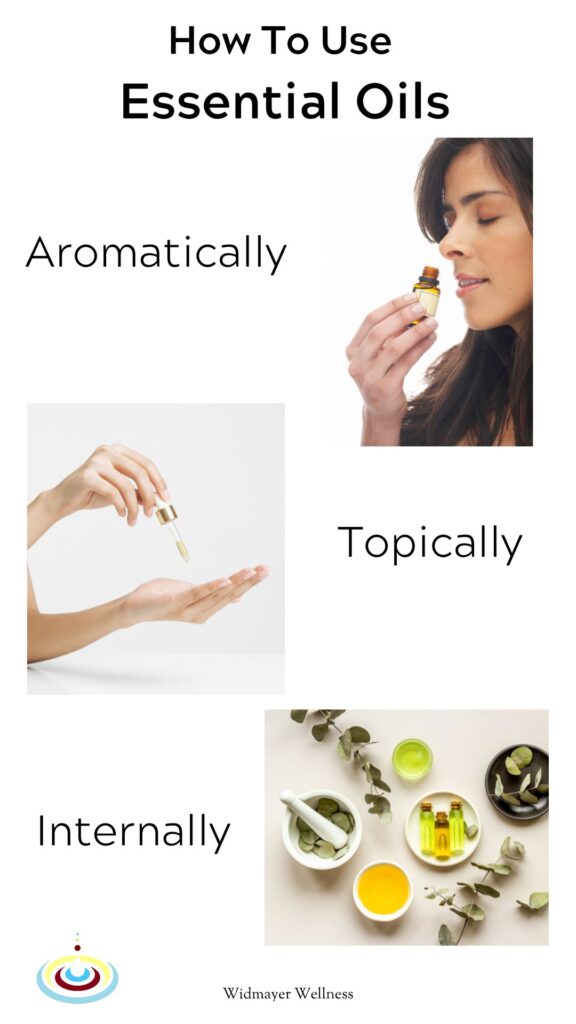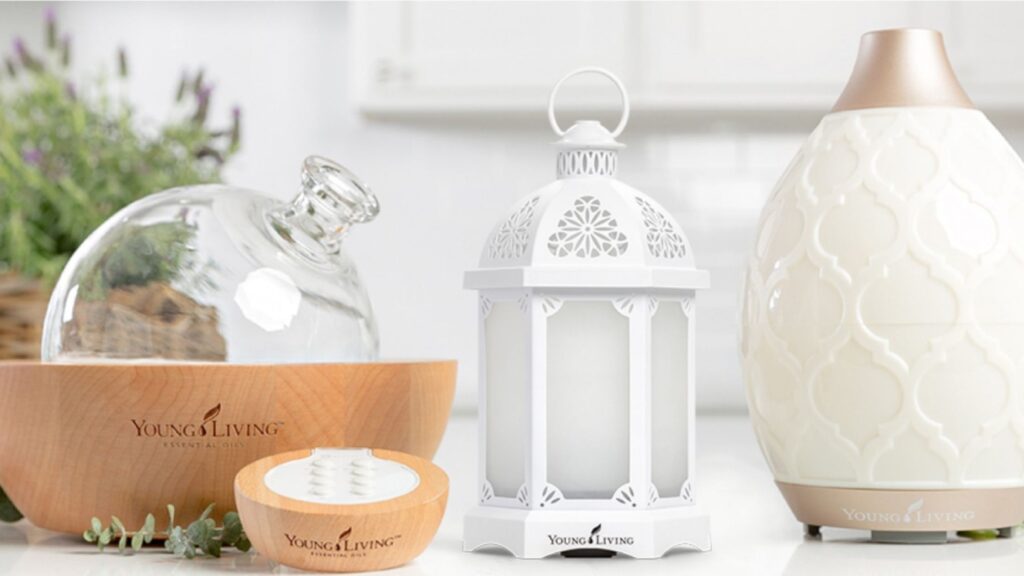Then the Lord said to Moses, “Take fragrant spices—gum resin, onycha and galbanum—and pure frankincense, all in equal amounts, and make a fragrant blend of incense, the work of a perfumer. It is to be salted and pure and sacred. Grind some of it to powder and place it in front of the ark of the covenant law in the tent of meeting, where I will meet with you. It shall be most holy to you. --Exodus 30:34
Essential oils have been in use since Biblical times. They are used in three primary ways to enhance your environment and well-being. Before we get to how to use essential oils, let’s talk about what essential oils are and where they come from.
What are Essential Oils?
Essential oils are the lifeblood of plants. They keep the plant healthy. We can use essential oils to support our own health.
Essential oils can come from all parts of a plant. They are derived from steam-distillation or cold-pressing. Citrus oils are often produced through cold-pressing peels. Other essential oils are steam-distilled from flowers, leaves, stems, bark, or fruit.
Essential oils are known for their sweet aromas, which provide scents to enhance your home or office experience, as well as support your wellness, physical and emotional.
Three Ways to Use Essential Oils
Three ways you can use essential oils to benefit your health and wellness are aromatically, topically, and internally.
Using Essential Oils Aromatically
The first way to use essential oils is aromatically. Breathing in essential oil aromas is called aromatherapy. There are several ways to benefit from aromatherapy.
- One of the most common ways to use essential oils aromatically is to diffuse them. What are the benefits of diffusing essential oils? Diffusing essential oils helps support wellness by encouraging sleep, focus, mood, and more. Disperse essential oils into the air with a diffuser. Add water and a few drops of essential oil into your diffuser per directions and enjoy unique, uplifting scents throughout your home.
- Another way to benefit from aromatherapy is to inhale directly from an open essential oil bottle. Take off the cover. Breath in deeply several times.
- Thirdly, you can place a drop of oil in your hands. Rub your hands together in a circular motion; then, cover your nose to take deep breaths. Inhale deeply using box breathing.
Using Essential Oils Topically
The second way to use essential oils is topically. Essential oils have many benefits to support healthy skin. When using essential oils topically, there are some important terms to understand.
Terms
- Neat – Neat means applying essential oil to your skin directly from the bottle.
- Hot – Hot refers to oils that are strong like peppermint, clove, or cinnamon. Hot oils should never be placed directly on the skin.
- Carrier oil – A fatty oil such as olive, sunflower, jojoba, or coconut. These oils are used to dilute essential oils when applying directly to skin. A carrier oil should not be used in a diffuser.
- Dilute – Diluting oils is recommended when applying them to skin. Diluting means adding a drop or two of essential oil to a carrier oil. There are several reasons you want to dilute essential oils with carrier oil before applying.
- First, hot oils require dilution so they don’t burn the skin.
- Second, diluting the oils lessens topical sensitivities.
- Third, dilution is better for those with extremely sensitive skin, babies, and the elderly. In fact, when using essential oils with these populations, extra dilution is recommended. You may also want to start with a patch test.
- Last, dilution slows evaporation, allowing more time for oil to absorb.
- Allow at least 24 hours to see if there is a reaction of any kind. If there is a reaction, do not use that oil.
- Patch tests are should be considered by everyone who wants to use essential oils. Even if your skin is not sensitive, a patch test is highly recommended. This helps prevent a developed sensitivity from overuse.
- Patch test – A patch test is applying a diluted essential to the inside of the forearm to test for topical sensitivity or reaction. The more sensitive a person is, the more dilution I recommend.
- A patch test should be done for each new oil or blend used topically, especially for those with allergies, or for children or the elderly.
Methods
- Using a 10 mL bottle with roller cap or a dropper bottle, blend essential oils with carrier oil and apply as desired. Oils can be applied to feet, hands, wrists, or back of neck, or anywhere that your body requires support.
- Apply oils neat, if dilution is not required, to feet, hands, wrists, back of neck, or anywhere your body needs support.
- Add essential oils to unscented lotions or creams that you buy or make.
Using Essential Oils Internally
Extra care must be taken when considering using essential oils internally. Essential oils for internal use should not be adulterated with other substances. They should be pure.
Be sure to read labels. Buy from a reliable, transparent source. I use these oils for internal use. Most importantly, choose oils that are labeled GRAS, which stands for Generally Regarded As Safe.
There are several ways to take essential oils internally.
- Add oil to your water, smoothie, or any preferred beverage. Use only glass or steel containers.
- Fill a veggie capsule with a few drops of essential oil and top with carrier. Swallow oils as needed. Store in a glass jar in refrigerator or freezer if you make in advance.
- Add a drop of essential oil under your tongue. This is called sublingually. Using essential oil under the tongue bypasses the first-pass metabolism and aids quicker absorption into circulation of body systems.
- Add a drop of essential oil on roof of your mouth and/or swallow a drop. This method supports the respiratory system when choosing an essential oil like peppermint.
- Add essential oils when baking, like lemon in blueberry muffins or peppermint in chocolate brownies.
- Add essential oils when cooking. For example, lemon or basil to vegetables, dill to salmon, citrus to vinegar/oil salad dressings.
When cooking and baking with essential oils, you are going for flavor. Essential oils are stronger than herbs, so it is important when using them in your recipes to add sparingly.
I recommend starting with a toothpick dip, regardless of what recipes recommend, as your tastes may be different than the recipe’s author. Also, when using oils in recipes where they will be heated, remember they will not hold the same therapeutic value.
Essential oils may also be found in vitamins and supplements, beverages, and other food items. These products should be scrutinized the same as pure essential oils you use internally.

Safety is always the number one consideration. Familiarize yourself with safe essential oils practice, and always consult with an essential oil educator, aromatherapist, or health professional when you have questions.

